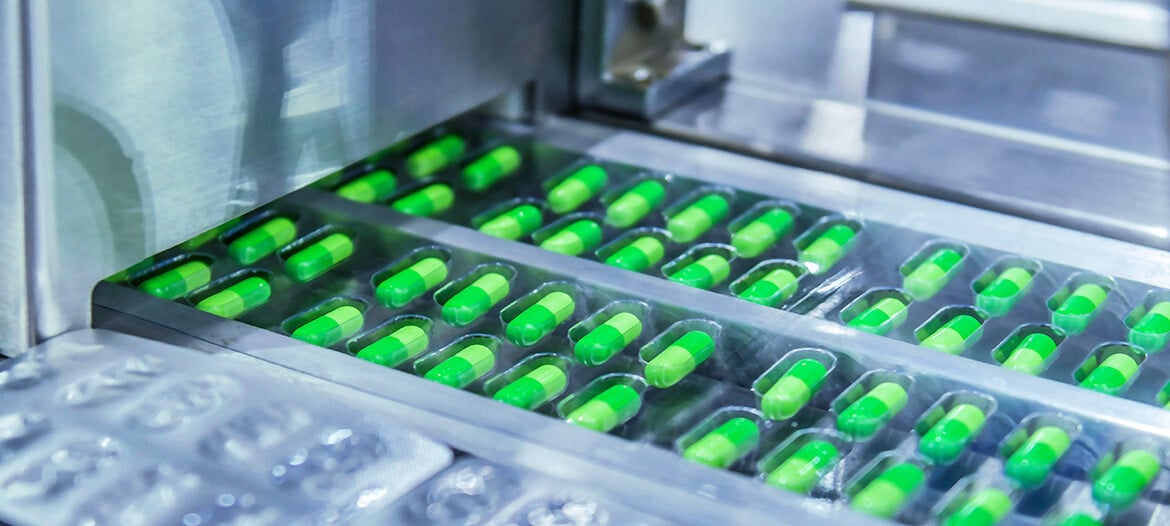DtP Focus: Temperature Monitoring in a Changing Clinical Supply Chain
This blog article is a summary of a white paper written by Esther Sadler-Williams (Managing Director at SIMPLYESW), Nimer Yusef (CEO at GxP brain), Gary Cunnington (Head of Business Consultancy at the Clinical Trial Supply Unit of Boehringer Ingelheim), Samantha Carmichael (Lead Pharmacist R&D/Clinical Trials at NHS Greater Glasgow and Clyde), Rebecca Stanbrook (Global Head Compliance and Regulatory Affairs Quality at Novartis) and Martin Peter (Head of Strategy at ELPRO). The full white paper can be downloaded below.
New trends are changing the clinical supply chain
The supply chain of investigational medicinal products (IMP) is long and complex. It typically involves various steps and parties such as production facilities, contract manufacturers, logistics service providers (LSP), distribution hubs and clinical sites. The full clinical supply chain from packaging to the patient typically takes several years and includes several transportation legs and various countries. Temperature monitoring along this supply chain and the consolidation of temperature excursions is nearly impossible.
Personalized medicines and gene therapies are the future of drug development. Additionally, the patient’s voice with respect to clinical trials is increasingly being heard; they are requesting more convenience, more virtual communication (fewer site visits, more electronic communication) and less travelling. Therefore, Direct-to-Patient (DtP) shipments will be growing in the coming years. This increasing trend of DtP intensifies the challenge of managing the complete clinical supply chain.
 The stability budget defines ideal transport and storage conditions and a budget of acceptable excursion hours above and/or below the ideal conditions before a product loses stability. It has been established over time by the product innovator company through numerous stability studies to determine the amount of time a product can spend out of its labelled storage conditions without risk to its quality, safety or efficacy. As a product moves through the various phases of the clinical supply chain and life-cycle, parts of this budget may be used-up by small temperature deviations typically during loading, unloading and transit points, from one step to the next, but also during packaging, manufacturing, or storage; small temperature deviations may happen.
The stability budget defines ideal transport and storage conditions and a budget of acceptable excursion hours above and/or below the ideal conditions before a product loses stability. It has been established over time by the product innovator company through numerous stability studies to determine the amount of time a product can spend out of its labelled storage conditions without risk to its quality, safety or efficacy. As a product moves through the various phases of the clinical supply chain and life-cycle, parts of this budget may be used-up by small temperature deviations typically during loading, unloading and transit points, from one step to the next, but also during packaging, manufacturing, or storage; small temperature deviations may happen.
It is difficult in the "classical" IMP clinical supply chain to keep track of the remaining stability budget. The more hand-over points, the more risks and the more complexity, it gets more difficult to keep track of the temperature and the remaining stability budget. Today this is often performed manually on paper or spreadsheet–file a batch record, deduct planned temperature excursions and document unplanned excursions. However, once a batch gets split up throughout the clinical supply chain, this manual process is not only time consuming and expensive, it is a process which is very fragile, error-prone and puts quality at risk.
If you’d like to learn more about the basic components of setting up and using a stability budget, read this blog post.

Diagram: IMP Supply Chains
The typical shipment size of DtP shipments is small (e.g., usually a single or handful of clinical kits) compared to site or depot shipments in the clinical supply chain (e.g., several kits at one time shipped using some form of refrigerated container/cool box or even palletized delivery of multiple cool boxes). Effective data loggers typically used to monitor IMP shipments are built for these larger shipments and are not designed to monitor individual kits.
When a shipment is handed over to the patient at their homes with some kind of a temperature logger, the temperature status (including the remaining stability budget) needs to be documented. Ideally, the healthcare professional supporting the patient has a tool, which is intuitive and simple to use. This tool should allow them to document that the IMP is safe to use, and it still has a remaining stability budget before handing it over to the patient.
In today’s electronic world, Interactive Response Technology (IRT) plays a key role in managing and monitoring many aspects of the clinical trial process, including the location, availability and status of IMP. Can the IRT be used to monitor DtP supplies? How would it be kept up to date? Is the patient motivated and capable of doing this?
Two temperature monitoring options
Monitoring temperatures along the clinical supply chain of an IMP to the patient (and even during storage at patient’s home) is important but challenging. There are two fundamentally different options to monitor and keep track of the remaining stability budget: Measure & Puzzle vs. Life-time/Kit-level indicator.

Diagram: Two temperature monitoring options for clinical supply chains
Measure & Puzzle: Option A is what most companies are doing today–at least partly. Depending on the study and depending on the agreements with CRO/CMOs, the responsibility of temperature monitoring can be organized in different ways. Depot shipments, but also site shipments, are typically monitored with temperature data loggers–at least to the point where an IMP is handed over at the clinical site or to a patient. However, the challenge with this option is: how to put the puzzle pieces together.
Assume a large quantity of clinical trial kits is shipped in several large containers to a depot. One of these containers experienced a temperature deviation during the shipment. After being re-packed and combined with other IMP, one of the kits experienced another deviation in a later clinical supply chain step when shipped to the clinical site. How can the two deviations be combined? Even if the data loggers from the two shipments are from the same manufacturer, how difficult is it to access the information of which kit has been in which container? Are the two files stored in the same system? Today sponsors often have to put the "puzzle pieces" together with paperwork or spreadsheets.
A Life-time/Kit-level indicator (Option B) is a fundamentally different approach. It equips each clinical kit with an individual visual temperature indicator at a kit level and monitors temperature during the entire lifetime–from packaging/labelling to patients' home and final use. It is, therefore, the obvious choice for several clinical trial scenarios, including DtP shipments since the transport to the patient, as well as the storage at the patient's home, can be monitored without interruption.
Linking the IRT System
IRT systems ensure randomization and drug management functions for investigational sites. These systems typically know all clinical kits and their status through the entire clinical supply chain. If a kit is damaged or loses its complete stability budget (has a temperature ALARM), the status of the kit in the system is changed. It is important to keep track of the (temperature) status in the IRT system. To make this feasible, it is imperative to link the device ID of the electronic indicator with the kit ID. As you can see from the illustration below, this could be done via scanning the data matrix during packaging, labelling or distribution. Once this identification between device and kit is established, it is simple to update its status later in the process without administrative effort. If a download is possible using a standard smartphone app, documentation anytime and anywhere in the process would become possible and enable additional patient safety checks and up-to-date information for the study team.

Diagram: Linking an electronic indicator with an IRT
Summary
In the past years, the industry has brought the processes of temperature controlled bulk shipments to perfection. Today, new regulations, new opportunities and new technologies are coming up. The trend to see the kit level moving through the supply chain directly to the patient is irreversible. The clinical supply chain is long and complex, and DtP is adding new challenges but also new opportunities for sponsors, sites and patients. Technologies are available to overcome those challenges and make the benefits accessible in temperature monitoring, mobile applications as well as in IRTs. However intuitive tools, clear SOPs and training are needed to make the processes safe, efficient and as simple as possible for the users.
The complete whitepaper has been published at Applied Clinical Trials on March 6th 2019, QUASAR Impact Issue #147 2019and can be found in PDF to download here.







Leave a Comment